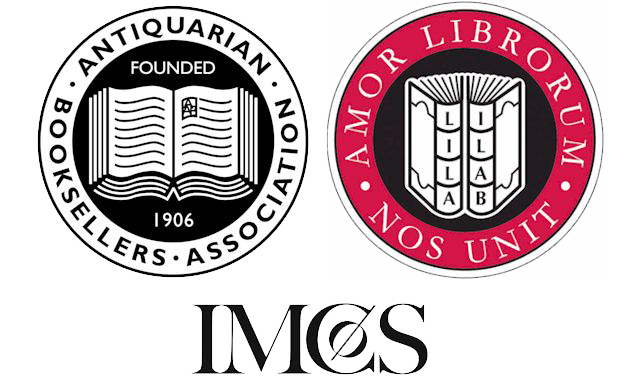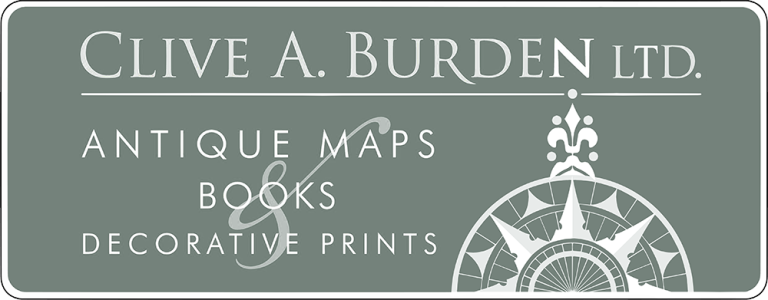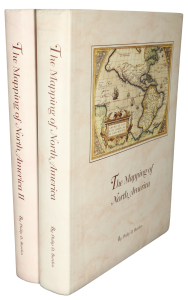Rare Maps and Prints
- World & Celestial
- North America
- West Indies, South & Central America
- British Isles
- British Isles
- English counties
- Large-scale
- Bedfordshire
- Berkshire
- Buckinghamshire
- Cambridgeshire
- Cheshire
- Cornwall
- Cumberland
- Derbyshire
- Devon
- Dorset
- Durham
- Essex
- Gloucestershire
- Hampshire
- Herefordshire
- Hertfordshire
- Huntingdonshire
- Islands
- Kent
- Lancashire
- Leicestershire
- Lincolnshire
- Middlesex
- Norfolk
- Northamptonshire
- Northumberland
- Nottinghamshire
- Oxfordshire
- Rutland
- Shropshire
- Somerset
- Staffordshire
- Suffolk
- Surrey
- Sussex
- Warwickshire
- Westmoreland
- Wiltshire
- Worcestershire
- Yorkshire
- Wales
- Scotland
- Ireland
- Western Europe
- Eastern Europe
- Middle East
- Africa
- Asia
- Australasia & Pacific
- Decorative Prints
- Title Pages
Mr. Philip D. Burden
P.O. Box 863,
Chalfont St. Giles, Bucks HP6 9HD,
UNITED KINGDOM
Tel: +44 (0) 1494 76 33 13
Email: enquiries@caburden.com
Hippolyte Sebron (1801-79) was born in Caudebec, France, on 21 August, 1801, and studied under Louis J. M. Daguerre (1787-1851). At the beginning of his career he painted mostly dioramas, but later he did easel paintings of church interiors and ruins, as well as some portraits. He spent 1849-55 in the United States, visiting Niagara Falls in 1850, New Orleans in 1851-52, and New York in 1854. He exhibited at the National Academy of Design, New York, in 1854, and regularly at the Paris Salon from 1831 until his death, which occurred in Paris on 1 September, 1879.
‘Any list of the wonders of the modern world would certainly include Niagara Falls. They are not the world’s largest or highest waterfalls, but they have an indescribable grandeur and a fascination which cannot be put into words. In fact it is doubtful if any other natural phenomenon in the world has excited such keen interest among artists’ (Spendlove). The chapter entitled Niagara Falls in Spendlove cites only the one oil painting of the Falls. ‘A magnificent oil painting of Niagara Falls from Table Rock by Sebron, about 1850, was engraved by Salathé and published by Goupil & Co. in 1852’. The most popular medium used was either pencil drawing or watercolour. Frederick Church’s famous painting of the falls painted in 1857 was purchased at the time for the sum of $2,000!
Sebron’s image offered here depicts from left to right the covered staircase, constructed before 1832, leading down to the American Ferry; the American Falls; the Biddle staircase, built on Goat Island in 1829, disappearing into the rocks; the forty-five foot Terrapin Tower, erected by Augustus Porter in 1833; the Horseshoe Falls; and finally Table Rock. The churning waters of the falls have frozen into masses of ice; at the Horseshoe Falls the mist rises into the air, blending with the stormy sky. One man is standing in the foreground with a rifle in his hands waiting for the right moment to shoot at some ducks on the Niagara River
Their is a similar painting by Sebron in the Coverdale Collection, purchased in 1970 with a special grant from the Canadian Government. One other is in the Musée des Beaux Arts (880.2.2), Rouen, France (‘Chutes du Niagara en hiver’, 1857). There are differences between all three paintings. A painting of Niagara Falls was exhibited by Sebron at the Paris salon in 1855, upon Sebron’s return to France. It is unknown which example this was. It is recorded that Sebron painted three oils of Niagara Falls, whether that offered here is one of these is unknown. Unlike the Coverdale example there are no figures below the covered staircase, also there are no figures hiding behind a rock in the foreground, and only one standing. Spendlove, ‘The Face of Early Canada’.
‘Any list of the wonders of the modern world would certainly include Niagara Falls. They are not the world’s largest or highest waterfalls, but they have an indescribable grandeur and a fascination which cannot be put into words. In fact it is doubtful if any other natural phenomenon in the world has excited such keen interest among artists’ (Spendlove). The chapter entitled Niagara Falls in Spendlove cites only the one oil painting of the Falls. ‘A magnificent oil painting of Niagara Falls from Table Rock by Sebron, about 1850, was engraved by Salathé and published by Goupil & Co. in 1852’. The most popular medium used was either pencil drawing or watercolour. Frederick Church’s famous painting of the falls painted in 1857 was purchased at the time for the sum of $2,000!
Sebron’s image offered here depicts from left to right the covered staircase, constructed before 1832, leading down to the American Ferry; the American Falls; the Biddle staircase, built on Goat Island in 1829, disappearing into the rocks; the forty-five foot Terrapin Tower, erected by Augustus Porter in 1833; the Horseshoe Falls; and finally Table Rock. The churning waters of the falls have frozen into masses of ice; at the Horseshoe Falls the mist rises into the air, blending with the stormy sky. One man is standing in the foreground with a rifle in his hands waiting for the right moment to shoot at some ducks on the Niagara River
Their is a similar painting by Sebron in the Coverdale Collection, purchased in 1970 with a special grant from the Canadian Government. One other is in the Musée des Beaux Arts (880.2.2), Rouen, France (‘Chutes du Niagara en hiver’, 1857). There are differences between all three paintings. A painting of Niagara Falls was exhibited by Sebron at the Paris salon in 1855, upon Sebron’s return to France. It is unknown which example this was. It is recorded that Sebron painted three oils of Niagara Falls, whether that offered here is one of these is unknown. Unlike the Coverdale example there are no figures below the covered staircase, also there are no figures hiding behind a rock in the foreground, and only one standing. Spendlove, ‘The Face of Early Canada’.
SEBRON, Hippolyte Victor Valentin
(Winter view of Niagara Falls from the Canadian side)
c.1850
Oil on canvas, 73 x 106 cms. Inscribed in brushpoint and grey paint, on rock, lower right ‘He. Sebron’
Stock number: 8446
SOLD






